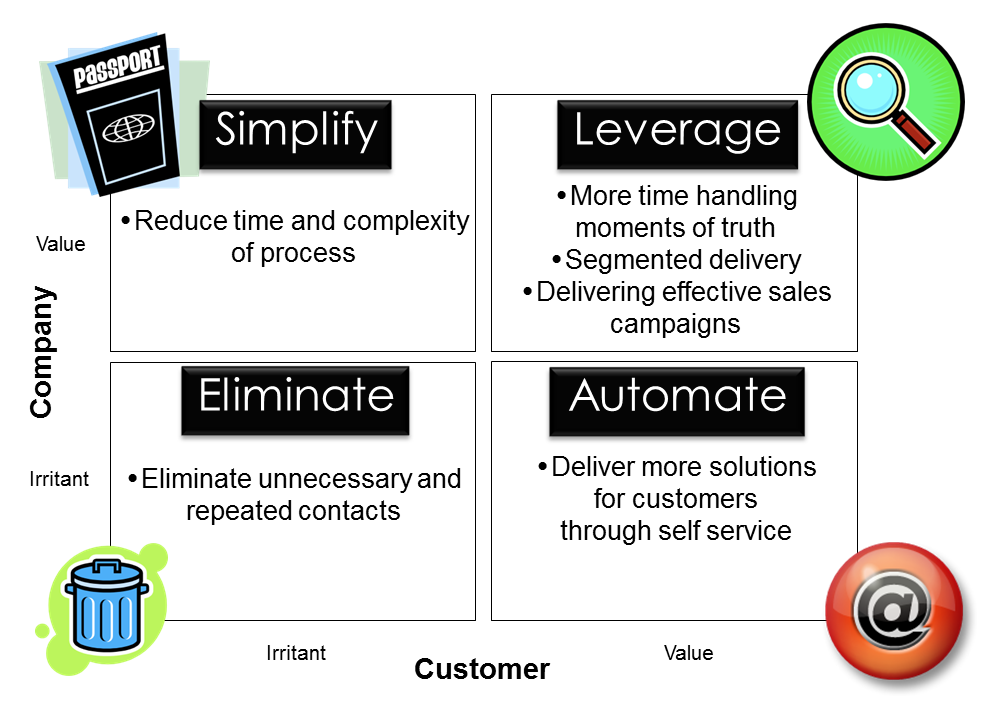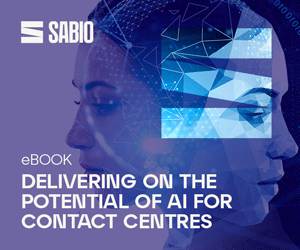We uncover what is holding you back from creating great customer relationships and suggest how you can address these barriers.
These barriers are split into four categories in this article, which considers:
- Do customers want a relationship with you?
- Is your customer service team preventing great customer relationships?
- Is management preventing great customer relationships?
- Are you stopping great customer relationships?
Do Customers Want a Relationship With You?
“Customer relationships” is a “buzz” term that is used throughout the customer experience industry. But consider this: do customers really want a relationship with you?
For example, if you work for a utility supplier – whether that’s an energy supplier, telecoms provider or so on – it is likely that many of your customers have little interest in having a close relationship with you, the majority of the time.
When this is the case, the old adage of delivering “world-class customer service” becomes overkill and uneconomic for many brands and their contact centres.
So brands should consider whether or not their proposition aligns with the customers’ idea of great relationships, before making the effort to create those relationships.
With this in mind, Peter Massey, the Managing Director of Budd, recommends using the Value Irritant Grid, as shown below, to help identify where you should be focusing your resources to best align with your brand’s ideology.
The Grid also shows where self-service and simplification will work, as well as where you can eliminate dumb things, which neither customer nor company value.

To best use this grid, we should be running through our customer verbatim intents (such as: “Where’s my stuff?”) and, considering each journey behind the intent, decide which quadrant that journey fits into.

Discussing the value of this model, Peter says: “We need to consider customer expectations and think about whether or not they think of something as valuable or as an irritant. That expectation and your own expectation is going to be set by your brand’s proposition and it will highlight key areas where you should invest in relationships.”
“However, if you consider what other companies would consider valuable and irritants, you will find lots of notable differences. Some have a completely automated online approach, while others will try and be more personal.”
The key thing here is to make sure that we don’t navigate away from our brand’s proposition, as that’s what attracted them to your business. People don’t fly with Ryanair and expect Emirates service. Or vice versa.
Is Your Customer Service Team Preventing Great Customer Relationships?
There are three key things to think about here in ensuring that advisors are fully equipped to have the conversations that will develop great relationships.
1. Staff Don’t WANT to Create Strong Customer Relationships
If your staff are not treated well, respected or given the freedom to do their job properly, then they will likely be far less willing and motivated to do a great job.
If you have created an environment where people can work to their best ability, you will find that your team are creating strong relationships with customers for you, through the conversations that they are having.
However, the opposite is also true in that poor environments can create conversations which harm customer relationships. This can be troubling as it’s difficult for large-scale business to get all of the environment right, in terms of things like:
- Getting the tools right
- Getting advisor motivation right
- Getting the right profile of people to do the job
Consequently, you get the problem of advisors trying to do the best that they can, but within limitations. These limitations may, over time, erode away the advisor’s will to create strong customer relationships.
2. Staff CAN’T Create Strong Customer Relationships
When answering the phone in the contact centre, many advisors won’t expect to talk to a customer who is totally engaged and “emotionally charged” enough to create a strong relationship with them.
Much of this has to do with the processes leading up to the interaction. For example, the way in which information is requested by the IVR before the conversation begins may not set the customer up for a highly engaging conversation.
Therefore, it is good to think about what precedes the conversations, across different channels, as well as considering how the policies, processes and technologies can each impact the interactions themselves and the advisor’s ability to create great relationships.
“If we get these three things right, we are ensuring that advisors are in a good energy space, not overworked or rushed against the clock. The advisor knows that their purpose is clear and that they have permission to do right by the customer,” adds Peter.
In these circumstances, we will often get a great conversation that leads to a good result for both parties, and the more we can facilitate great conversations, the more we can grow loyalty.
3. Staff WON’T Create Strong Customer Relationships
How much are your staff engaged in the purpose of your business and the expectations that you have of creating great customer relationships?
This is a key question for you to consider, because if your team is not motivated by this purpose and does not understand the significance of their contribution to this purpose, that will be a key barrier in creating great relationships.
The trouble is that it is difficult to tell how motivated the team is and there is no one “accepted” method measuring employee engagement in the contact centre.
Peter is a fan of the method proposed by Marcus Buckingham in his book “First, Break All the Rules”. Marcus worked for Gallup and they developed, statistically, a set of questions related to high performance. These are:
- Do I know what is expected of me at work?
- Do I have the right materials and equipment I need to do my work right?
- At work, do I have the opportunity to do what I do best every day?
- In the last seven days, have I received recognition for good work?
- Does my supervisor, or someone at work, care about me as a person?
- Is there someone at work who encourages my development?
- At work, do my opinions seem to count?
- Does the purpose of my company make me feel my work is important?
- Are my co-workers committed to doing quality work?
- Do I have a best friend at work?
- In the last six months, have I talked with someone about my progress?
- At work, have I had opportunities to learn and grow?
According to Peter: “These are things that you can concretely assess and measure. Then you can look at which of these is affecting the way in which your performance is going, looking through the lens of your purpose to create great relationships.”
Is Management Preventing Great Customer Relationships?
There are two levels to this. Firstly, what do “managers” think their job is? And secondly, what is the organizational system under which managers operate in your business?
At one end of the spectrum, organizations will be very clear that managers are there to support the frontline in having great conversations with customers.
In these organizations, managers are not interested in trying to control everything, but see clearly that their behaviours are those of coaches. This is different from having managers who carry on a “do what you’re told” culture, which would be at the other end of our scale.
To create great customer relationships, we want to avoid a control culture like this. However, the culture that your managers create will come down to two things, as Peter tells us.
Peter says: “One is how has the manager learned to manage, thinking about their role models within the contact centre? And two is how is the manager trained to be a manager in that specific business?”
“Many times, people are given the job without any additional support as to how they should do the job, even if it’s their first team leader role.”
So, to create great customer relationships we need to focus not only on selecting the right people to be managers, but also on giving them the right training and the right support to be able to do that job.
Then that manager works within a system, the measures, routines and rhythms – so we also need to look at target operational models and more thoughtful ways of working, not based on historic or accidental procedures.
To find out more about coaching good leaders in the contact centre, read our article: Train Team Leaders Well
Are You Stopping Great Customer Relationships?
Now we’ve thought about how customers, advisors and management may be influencing our ability to create great customer relationships, it’s now time to think carefully about what you’re personally doing.
There are four elements to think about here, as we assess if we are putting up barriers to better customer relationships.
1. Strategy
When you are deciding for which customers you are designing your brand, offer and products, you are bearing in mind the audience for whom it’s appropriate. So you set out to design something that fits the audience that you’ve chosen.
But what will likely happen in your market is that you end up with a much wider audience than just those who you have designed the offer for, and it might not be highly suitable for everyone.
“If you are looking to develop the most effective operations and economics, then deciding not to sell to certain people can change those economics quite distinctly,” says Peter.
A good example of this is the Swedish bank Handelsbanken, who are very clear about when it is and when it is not good to do business with customers. They’re not afraid to say: “We don’t provide the kind of service that you need” to customers.
The bank is very honest with customers and is clear about its operating model. They want long-term relationships with their customers and they don’t want short-term transactional customers who don’t look for the kind of relationships that they offer.
With this in mind, your strategy should be in making sure that you do business with the audience for whom you have designed your offer. This will remove a lot of the frictions and allow you to better focus on creating relationships with people who want them.
2. Environment
Advisors are often expected to meet customer needs while using low-quality equipment and slow systems. But if the environment isn’t set up for developing great customer relationships, any strategy that we implement will be limited to papering over the cracks.
When it comes to technology, let’s not limit our thinking to installing cloud-based applications and AI; we can first think a little bit simpler and ask: how many screens have advisors got?
Comparatively, it’s very low cost to give advisors a second or third screen, which would make their role easier because they are able to display more things when they are doing more complex work.
So this is a great thing to consider, as well as the physical environment of our contact centre.
Another example would be that we may be in a typical office building, but does it need to have white walls? The latest start-ups are thinking differently.
“Just think about what kind of working environment you create. Rather than anchoring advisors to a desk all day, consider how you can give people different kinds of settings while keeping the acoustics good for the job advisors are doing,” says Peter.
Altering the environment will alter the way in which advisors work and how they feel about their work and forming great customer relationships.
3. Detail
“A manager who doesn’t do detail isn’t going to get anything right in a digitally transformed world,” Peter tells us.
Why? Well, Peter believes the success of your designs for mobile apps, websites and services always comes down to small details. One word out of place or one gap in the flow of a self-service system can cause the whole process to stop.
Think of the O-ring principle in economics. This is a principle named after little rubber O-ring in a pipe joint, which has been linked to the failure of the Challenger Space Shuttle.
The O-ring principle is that if any one part fails, the whole fails and that’s something we need to think about in terms of the user experience (UX) and doing detail in a digital world.
Putting this into a helpful example, Peter says: “Lots of contact centres now play around with bots and other forms of AI. Yet if you can’t design an old touchtone IVR, you’ll be highly unlikely to design a great chatbot. The level of detail with this stuff has gone up, not down.”
Nowadays, with so many of our contact centre conversations coming off the back of failed experiences with an app or a website, it’s important to understand the detail in the UX world. We must also make sure that the whole comes together in order to create a complete experience.
4. Talent
Everybody is trying to recruit the very best people they can, but your contact centre may be located in an area where that is proving difficult.
So you’re left with a decision. Do you fill the seats with people who aren’t quite what you hoped for and work closely with them to get the best result possible? Or do you hold off and take a hit on your service level until you find the right candidates?
This is a tricky question to answer, and getting the right talent into your business to deliver exceptional customer service, which leads to great relationships, is one area that you need to consider closely. But the second question is how you induct, motivate and train them. A huge topic.
Then there is a third aspect to this and that is “hidden talent”, and this comes from the idea that many contact centres don’t dig into what people are capable of beyond doing the job that they’re given.
“X-factor thinking, painting and decorating or, as I’m finding more and more now, is people in contact centres who are good at creating bits of code,” says Peter.
“Maybe it’s just a hobby that enables the advisor to create bits of technology, but whatever the case, people are tapping into that, acknowledging their skills and giving advisors spare time to create useful things.”
So, whether it’s decorating walls with vibrant colours or creating little bots to do otherwise labour-intensive processes, it’s really worth finding out the hidden talents that are within the team.
The better we utilize our talent, the better we can work towards our goal of creating great relationships.
What Else Is Stopping Your From Creating Great Customer Relationships?
While we have now touched upon the main hurdles to creating great customer relationships, as the world becomes increasingly digitalized, there are three more key areas that we must consider.
1. Data
From one organization to another, there will be a great spectrum in the capabilities of using data. But how you secure that data is something that is going to influence the relationships that you have with customers.
Privacy data has now become part of the user experience, and when we are designing conversations, through both machines and people, we need to take a careful look at the usability of that privacy.
So make sure you have a very positive view of the customer controlling their own data, rather than a defensive view of “we want your data”, whether the customer wants to give it or not.
As Peter says: “This is becoming really quite important in the impression that you create at the start of the interactions, and it requires a lot of thought, alongside how usable that data is to advisors during customer conversations.”
Organizations have tons and tons of data about past and present customers, through previous business or maybe buying it in through Google. The level of information you can get is phenomenal.
But how much of that is presented into dashboards that are absorbable by advisors as they start having conversations with a customer? Are advisors being given all the information possible to engage in the best possible conversations?
2. Usability
One of the most important things to remember when you are designing an app, IVR or anything else, is that there is no substitute for testing. You have to test because there are just so many surprises in how people will try to use your systems.
Unfortunately, the resources to do testing are often in short supply, so when you start to look at optimization as a subject, you need people and a budget to create the time to do lots and lots of testing. It’s a fundamental in getting any kind of user experience right.
And most contact centres don’t have an optimization team optimizing conversations and developing the IVR, self-service and other vital systems.
While some of the very large companies might, the vast majority don’t recognize the value in a daily or even hourly check of self-service applications and using that to optimize interactions.
There is great value in optimization. For example, if you have 1,000 advisors, by optimizing and having better conversations or lowering demand for conversations, you might cut the workload of many advisors by having just one optimizer.
“At any one time, there should be a distinct bias towards investing in optimizing in order to not have the contacts, rather than having loads of contacts and only optimizing how you handle them,” Peter concludes.
3. AI Jargon
AI is a phrase that’s being dropped into the contact centre conversation by many consultants and vendors, but a lot of that is lip service. We need to first recognize the distinction between AI and machine learning.
A good place to start with this is to consider: what does good look like? If you’re asking a machine to do a job, you need to be able to say whether the machine did the job well or not.
When put into that perspective, the difference between machine learning and AI is that with AI, the machine can tell you whether or not it has done a good job. Whereas, with machine learning, a person needs to check the results and see.
But why is this distinction important in terms of creating great customer relationships through exceptional customer service?
Peter says: “Machines can learn very quickly; they can handle large amounts of data these days. But if you haven’t got enough resources to be teaching the machine what to do and checking that it is achieving the right result, your development programme is at a wholly different pace. True AI is not what most people are buying today.”
So, if it’s machine learning, you need to be manually checking quality – you might be putting a system in front of your customers that negatively influences their experience unless you invest the skilled resources to go with it.
For example, this is a mistake that many organizations have made when rushing to install a chatbot…
To help remove any chatbot misconceptions that you might have: 7 Things They Won’t Tell You About Installing a Chatbot
For more advice on delivering the exceptional customer service needed to create great customer relationships, read our articles:
- 10 Examples of Exceptional Customer Service
- How to Improve Agent Performance in the Call Centre – With a Checklist
- What Does Good Customer Service Look Like?
Author: Robyn Coppell
Reviewed by: Hannah Swankie
Published On: 20th Jan 2020 - Last modified: 17th Sep 2025
Read more about - Customer Service Strategy, Customer Experience (CX), Customer Loyalty, Customer Relationship Management (CRM), Peter Massey, Service Strategy







































